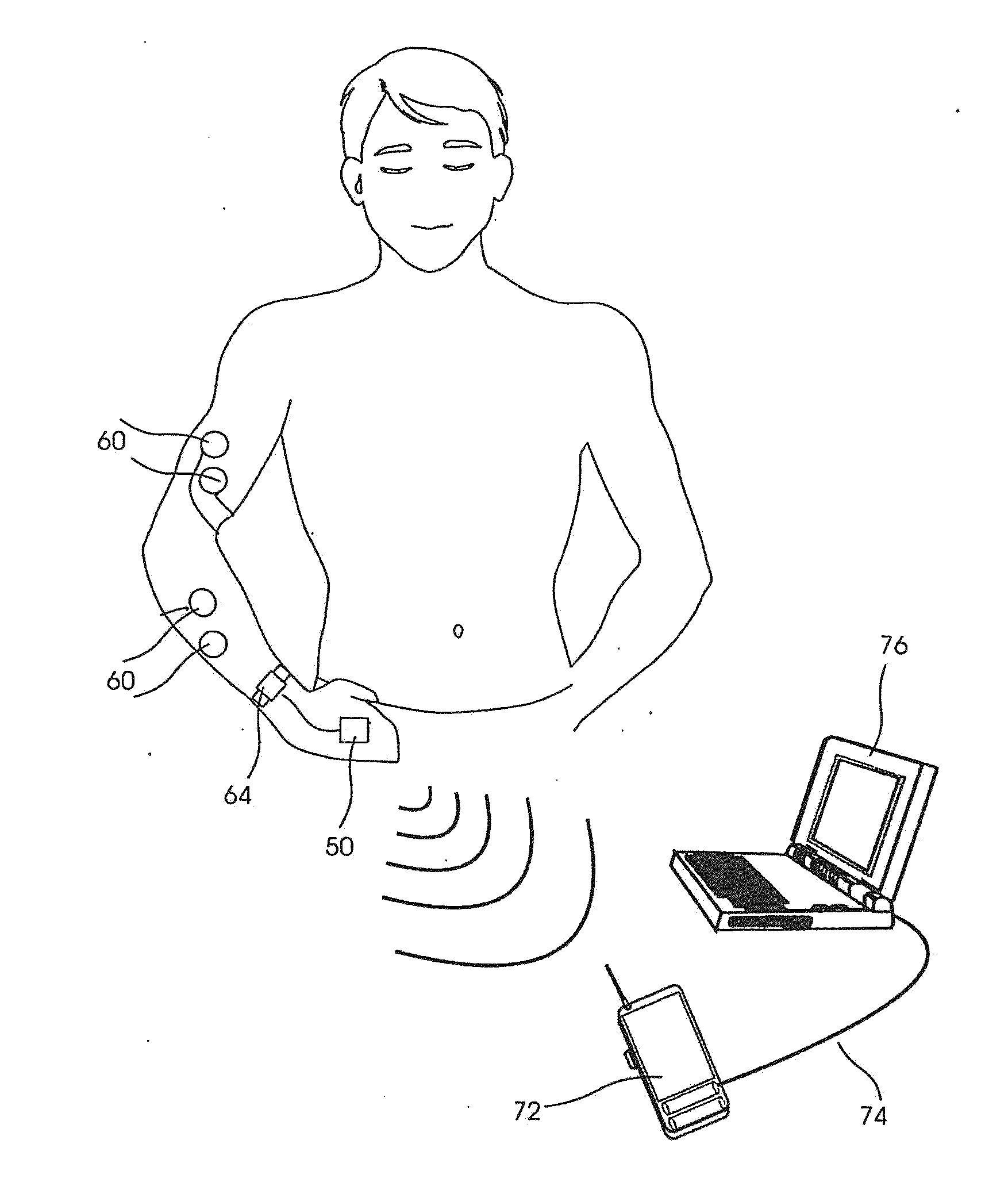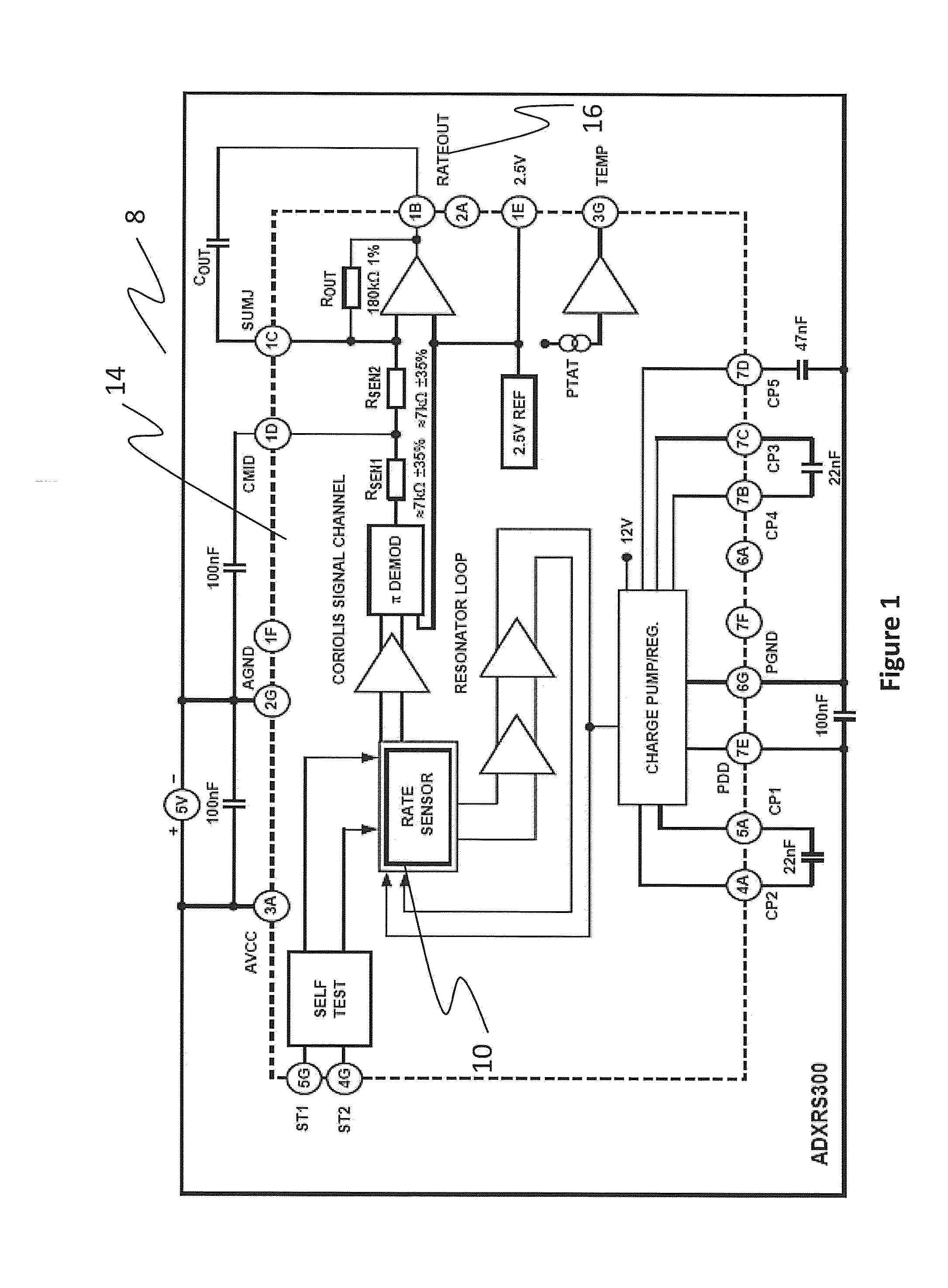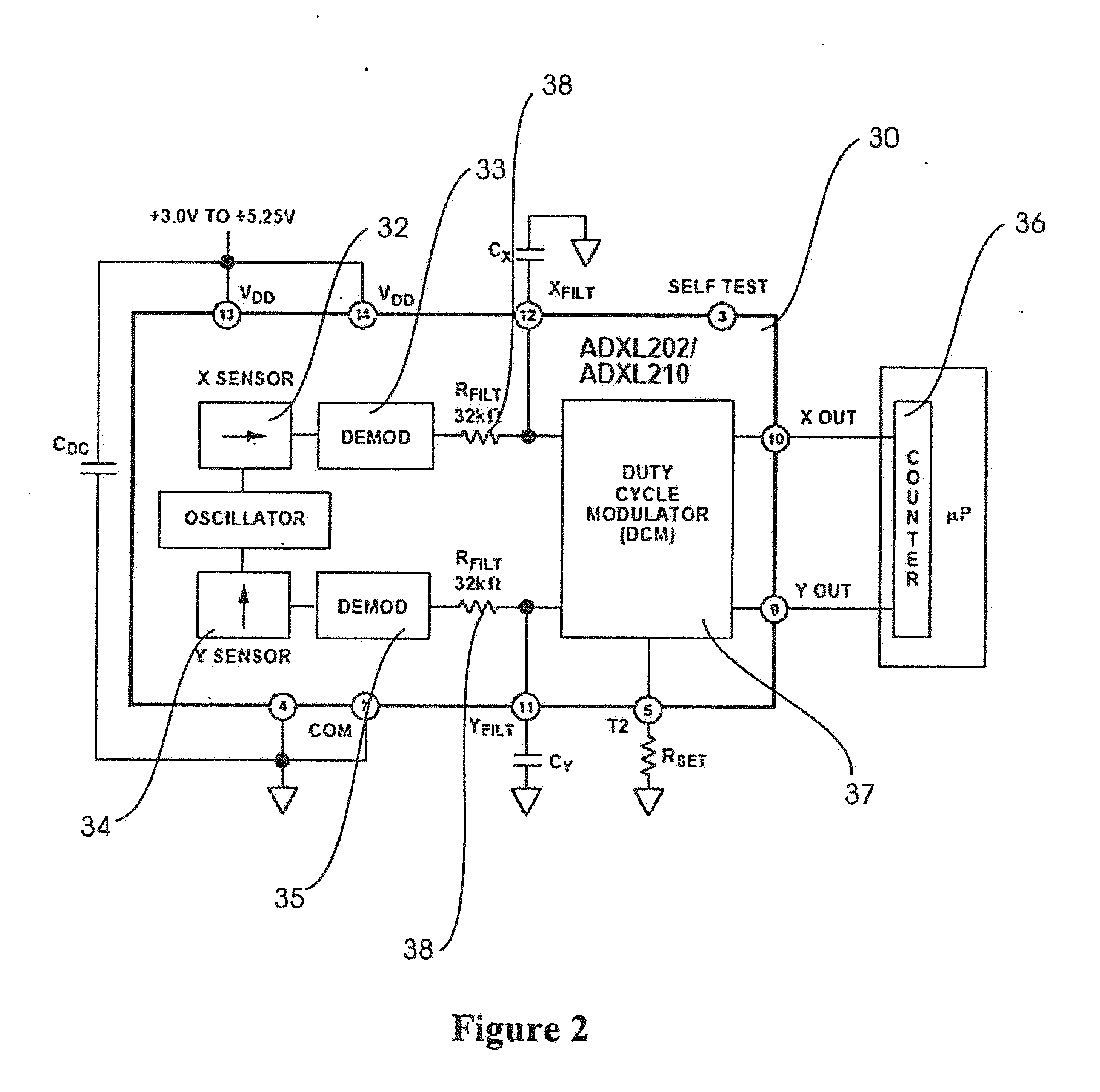Tremor of the hands can be cosmetically upsetting and affect functional tasks such as grasping of objects.
Bradykinesia refers to delays or hesitations in initiating movements and slowness in executing movements.
Rigidity occurs because muscles of the body are overly excited.
Rigidity causes the joints of the subject to become stiff and decreases
range of motion.
Accelerometers and gyroscopes have been used individually to quantify some of these movement disorder symptoms, however, alone each sensor has limitations.
Further, results of a second integration required to obtain linear position are often contaminated with
noise, making measurement difficult at best.
Gyroscopes measure
angular velocity independent of gravity with a good
frequency response; however, static angular position cannot be measured accurately due to DC drift characteristic with these devices.
With the tremendous amount of research into neuroprotective treatments designed to slow the progression of
movement disorders, and particularly Parkinson's
disease, the need for standardized,
highly sensitive assessments of movement disorder treatments cannot be understated.
These clinical assessments can suffer from bias,
placebo effects, limited resolution, and poor intra- and inter-rater reliability.
Currently, no commercially available
system provides a means to objectively quantify the severity of movement disorder symptoms in real-time.
Furthermore, many of these systems are bulky and cannot easily be worn by a subject during normal daily activities so as a result can only be used to monitor the subject in an intermittent fashion.
In addition, some of these systems are tethered, which reduces subject safety, limits home monitoring capabilities, and does not allow for recording of some movement disorder symptoms.
Finally, none of the current systems have clinician interface
software, which quantifies symptoms such as tremor, bradykinesia, rigidity, and dyskinesias and relates them to standard rating scales such as the Unified Parkinson's
Disease Rating Scale (UPDRS).
Even further, the currently available systems are typically hindered by a large degree of variability in the quantification of symptom severity.
Systems requiring subject feedback, for example by use of a journal for recording the subject's
perception of symptoms throughout the day, suffer from a lack of subject compliance.
Many subjects provide skewed information, or more often fail to comply with the reporting standards completely and then fill in the journal near to the time of an appointment with the clinician, rather than on a daily basis as the symptoms occur (or do not occur).
This variability and subjectivity further hinders the research and development process requiring long periods of time and large numbers of subjects in order to verify and qualify new treatment methods for clinical use.
Measurement errors can take the form of inconsistencies caused by the participant's physical or
mental condition, variations in the testing procedure, or tester error.
Various methods to improve consistency such as using the same rater or testing on the same
time of day can improve reliability; however, most of these techniques are not practical for large, multi-center clinical trials.
While studies have shown relative high test-retest reliability for the UPDRS-III as a whole (see e.g., Teresa Steffen et al, Test-Retest Reliability and Minimal Detectable Change on Balance and Ambulation Tests, the 36-Item Short-Form Health Survey, and the Unified Parkinson
Disease Rating Scale in People with
Parkinsonism, 88
PHYSICAL THERAPY 733 (Jun. 1, 2008)), this traditional method of subject evaluation presents several problems for large scale pharmaceutical studies.
The required presence of a trained clinician to rate symptoms creates costs associated with subject travel and clinician time.
In addition, the use of medications for treatment of Parkinson's
Disease often causes symptom fluctuations during the day, which cannot be monitored during a single visit with the trained clinician.
To compensate for this lack of
temporal resolution, subjects are often asked to complete daily diaries; however, in clinical trials, these diaries are notoriously poor in quality as subjects may have a tendency to wait and fill out the diaries in retrospect rather than throughout the day on a daily basis.
Also, clinical trials typically employ several clinicians at different sites, which may lead to symptom scoring variability and in turn
decreased sensitivity due to the subjective observations of each clinician.
Finally, the discrete nature of the integer scores (0, 1, 2, 3, or 4) under the UPDRS does not allow for the high sensitivity measurements that would be necessary to capture the very subtle changes that might occur during a
neuroprotective drug trial.
Evaluation of neuroprotective therapies can take years or even decades due to the long period before a UPDRS measurable response is seen.
Many researchers have cited the inability to measure slight changes in motor symptom severity using the UPDRS as a hurdle in evaluating potential neuroprotective agents.
And while reliability of the UPDRS-III (the motor section) as a whole may be high, specific symptoms or items, such as those related to bradykinesia for example, lack specificity and suffer from poor intra- and inter-rater reliability.
2129 (Nov. 15, 2008)); however, it is difficult, if not impossible, to judge tremor amplitude precisely by
visual observation alone.
Even if precise visual observations were possible, converting a wide range of amplitudes to an integer
score greatly reduces resolution.
For evaluating
finger tapping,
hand movements, and pronation-supination, evaluations are even less reliable since raters must account for speed, amplitude,
rhythm, hesitations, freezing, and fatigue, all with a single
score.
A third study showed fair to good agreement; however, raters were not blinded and the subjects had early, untreated PD, which restricts the range of test-retest reliability (see A. Siderowf et al., Test-retest reliability of the unified Parkinson's disease rating scale in patients with early Parkinson's disease: results from a multicenter
clinical trial.
 Login to View More
Login to View More  Login to View More
Login to View More 


